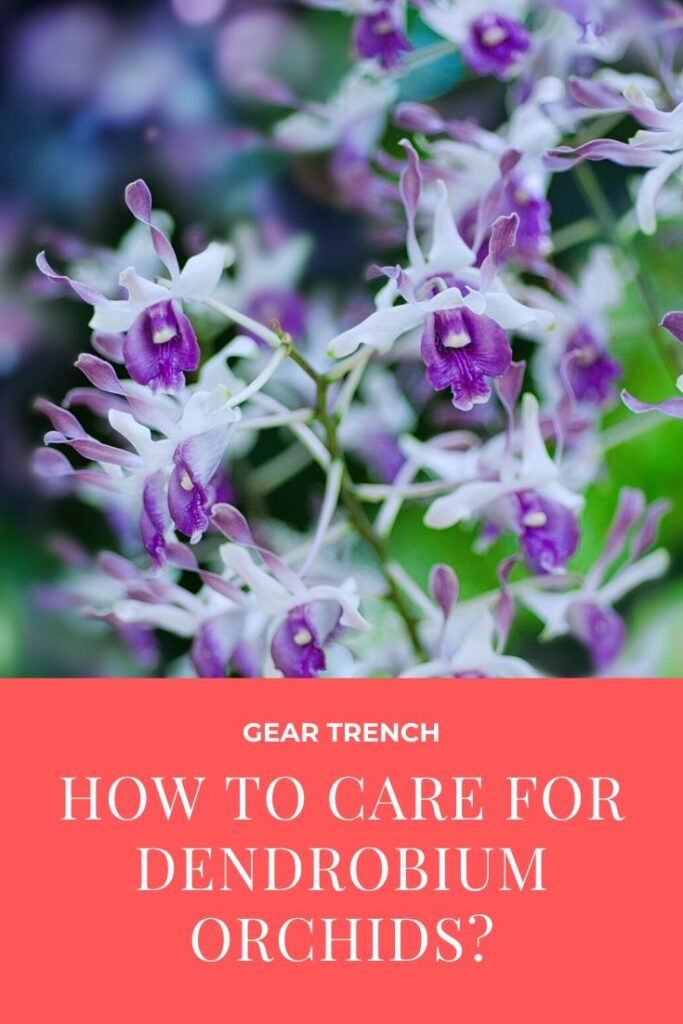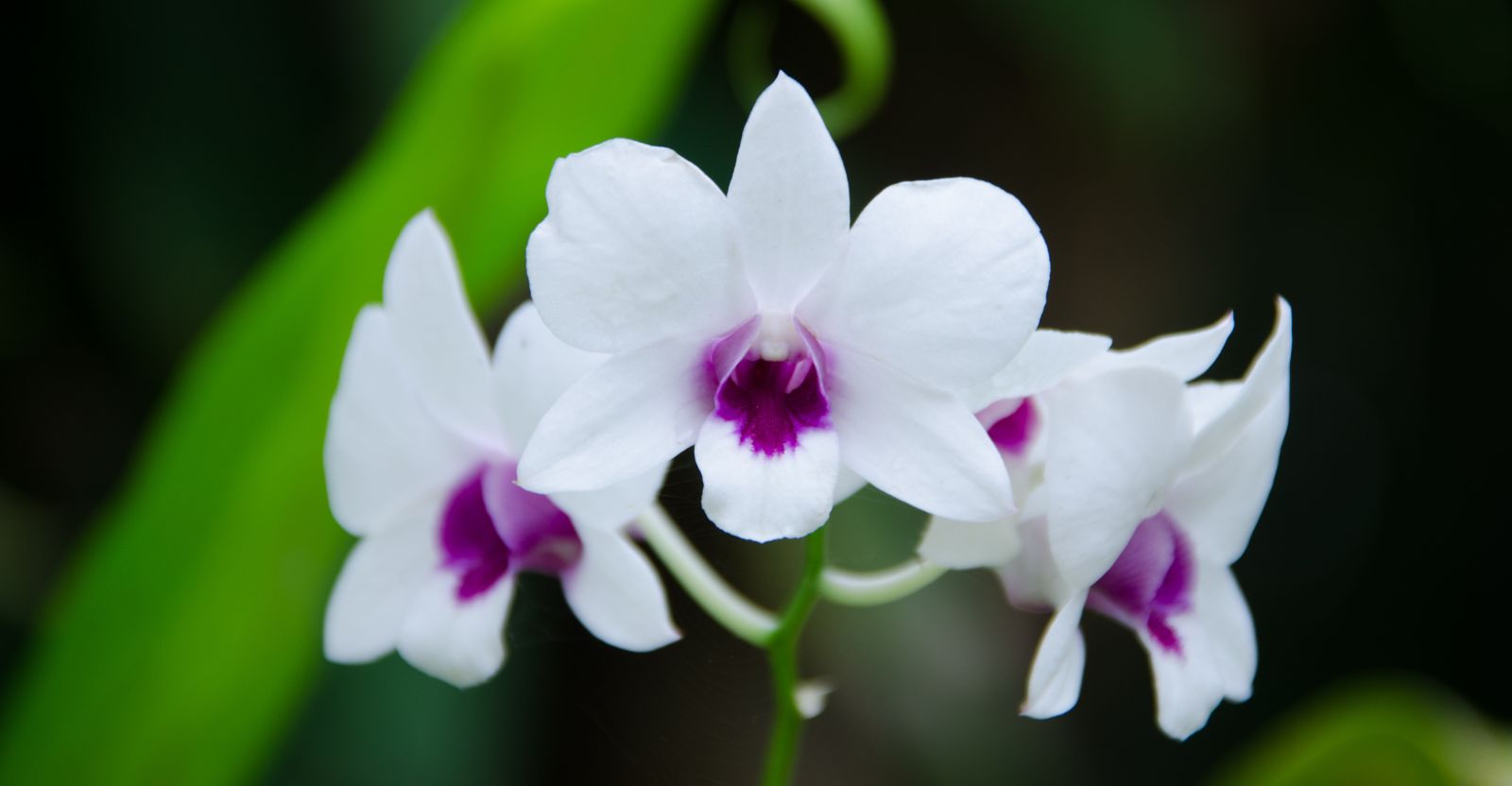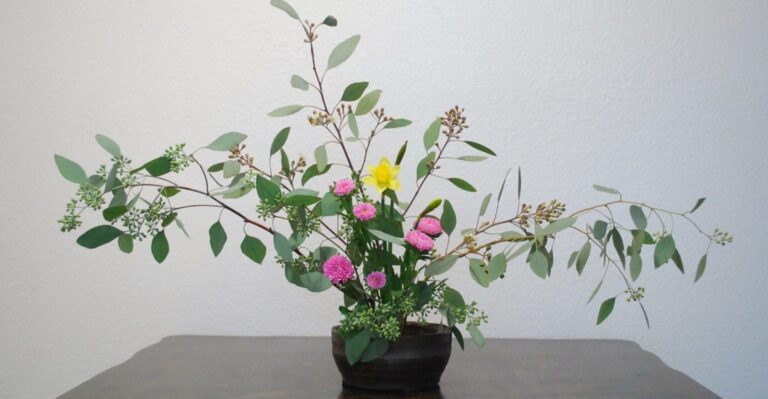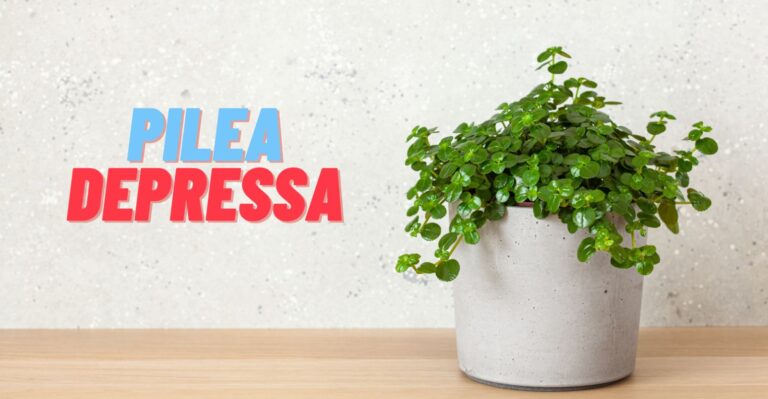Amazon has put together some great Home Gift Deals – save money and get your shopping done at the comfort of your home! Click here to see deals on Amazon
If you’re looking for a practical guide for Dendrobium orchid care, then we’ve included all the information you need to get started with your orchid gardening.
Growing orchids are getting popular due to the bright color and elegance of its flower. However, there is still a lot of misconception among people that growing Dendrobium orchid is difficult and expensive.
The modern propagation method of growing Dendrobium orchids has made it easy to plant and care for orchids without costing too much. Plus, orchids are great flower plants for both indoor and outdoor. It flowers for an extended period— sometimes, six months of continuous flowering.
In this article, we will discuss how to take care of Dendrobium orchids.
What are Different Types of Orchids?
There are more than 25,000 documented species, including some 800 subspecies and around 110,000 registered hybrids of orchids. The orchid belongs to the Orchidaceae species and is one of the largest families in the plant kingdom.
A wide range of orchids is found in the subtropical and tropical regions of Asia, South America, and Central America. But the hybrids orchids are found all around the globe.
The orchid flowers come in various shapes, sizes, colors, and fragrances. The smallest orchid has pinhead size flowers and is known as a miniature moss orchid (Bulbophyllum Globuliforme).
On the other hand, the tiger orchid (Grammatophyllum speciosum) is the largest orchid flowering plant in the world.
The orchids have a very soothing fragrance from delicately sweet to sharp spice, musty to putrid. For example, the flowers of Encyclia fragrans produce a strong honey-vanilla fragrance, whereas Paphiopedilum malipoense emits a strong raspberry smell.
Read More: 19 Inspiring Backyard Pond Ideas For A Small Budget
Which Orchid to Plant Based on Climate?
Dendrobium orchid has over 1,000 species found in Asia from India to Papua New Guinea. You may also find its varieties in Australia and New Zealand. As Dendrobium is found in so many different places, it can be grown into many climatic zones.
Many species of Dendrobium prefer tropical climates, but some species prefer intermediate, while others prefer colder climates. All Dendrobium orchid requires good direct sunlight. The Dendrobium flowers come in different shapes, sizes, and colors.
Which Dendrobium Orchid Species Can Be Grown In A Cool Climate?
Dendrobium cuthbertsonii is a miniature orchid that can be grown in cold weather. These produce flowers from yellow to orange and pink to red or in the multicolored pattern.
In the wild, these miniature orchids grew no more than 5 cm high and were found growing on tree ferns at a higher elevation.
You can grow it in a small pot or on tree fern fiber. You need to provide regular watering and frequent feeds. It requires high humidity and can tolerate temperatures as low as 46 degrees F (8 degrees C).
Which Dendrobium Orchid Species To Be Grown In A Mild Climate?
There is a wide range of orchids that can be grown in a mild climate. For example, nobile type Dendrobium species are widespread in Hawaii and Japan and known as Yamamoto Dendrobiums.
These have tall-stemmed bulbs that produce many flowers in the spring. These thrive from late spring and throughout summer.
It needs regular watering and feeding to help grow a healthier and fatter plant. The stems are very sturdy and heavy, and it needs to be secured and supported vertically.
In autumn, as the temperature begins to fall, you should sprinkle high potassium-based fertilizer to prepare it for the winter. The orchids get buds to emerge from every node along with the swollen cane. Make sure to keep the plant dry until the flower opens.
The Dendrobium Nobile are mild climate flower species, but it can tolerate mild cold and dry weather. If the temperature goes far below, then the leaves turn yellow and fall off, leaving bare canes.
In winter, provide it with ample light that helps the plant to maximize flower production. Sufficient light allows orchids to flower long-lasting, and an exceptional range of colors bloom. You may repot it after flowering as this leads to an active growth period.
You can remove the old canes and lay them on the damp area over the summer. The bulbs produce new keikis that can be removed at the end of the growing season and planted.
Which Dendrobium Orchid To Plant In Warm Climate?
The Antelope and Phalaenopsis types of Dendrobiums are suitable to be planted in tropical and warm weather. You get spiraling petals from Antelope orchids whereas Phalaenopsis bloom round beautiful flowers.
These orchids have tall, erect canes that provide better support than the Dendrobium Nobile types orchids. You get around six pairs of succulent that has firm leaves on the top of the bulb. The flowers are beautiful and long-lasting borne along with the full-grown canes.
The orchid needs proper humidity and light to grow in the warm climate. It has a healthy and sturdy cane and requires adequate feeding throughout the year.
You have to provide high nitrogen-level fertilizer in the spring to boost the growth. Reduce the feeding to a reasonable level in the summer, followed by a blooming in autumn. It helps with the hardening of the cane and prepares it for the winter.
You get year-round flowering with a warm climate Dendrobium orchid. These should be repotted as soon as after the flowering. If you’re using a compost mixture, make sure it’s free-draining so that it can be watered regularly with fresh water.
If planting it indoors or in the shade, then move it around so it can get enough direct sunlight. Use a sturdy, stable pot as Dendrobiums are top-heavy.
We don’t recommend using a plastic pot due to poor airflow. For planting Dendrobium orchids, then clay pots are ideal as it contains a heavy base and provide better airflow.
How to Care for a Dendrobium Orchid
Orchids are robust and sturdy plants that don’t need as much care as some other flowering plants. Follow the simple guidelines below when caring for Dendrobium, and you will get long-lasting beautiful colorful flowers.
How Often Do You Need To Water Orchid
The water requirement varies depending on the temperature, seasonal condition, and the growth cycle of the plant. During the active growing seasons, the orchid needs more water to support growth. Here are some tips when watering the orchid.
- Keep the plant moist, but not soggy. You can check the moisture level by putting your finger in the topsoil or judging by the weight of the pot.
- On average, you need to water orchids once or twice a week.
- When you’re not sure about watering, mist the plant rather than water it. The orchid roots are more sensitive to overwatering. The fine spray of mist provides enough moisture to get some humidity and frees the leaves from dust and pests.
- Take the plant to a sink and place it under the running water. Watering it from the top allows the water to run entirely through the potting medium and flush out any salts, excessive mineral deposits, and accumulations.
- If you have been away for a while and couldn’t water it regularly, then the orchid gets excessively dry. In that case, keep misting it periodically but don’t overwater it.
- Be sensitive to seasonal changes, such as hot summer that increases the water evaporation, and you may have to water it frequently.
Misting
If you live in a warm climate or centrally heated rooms, regular misting is necessary to prevent dehydration in the plant. You can drizzle the orchid using a fine, light spray to moisten the leaves.
You can mist the plant in the morning that allowing the water to evaporate throughout the warm day. Don’t mist it during the evening or night-time as evaporation slows at this time, and excess moisture can damage the orchid or cause bacterial rot.
Humidity
Orchids love humidity, and you can maintain humidity around the plant by placing the pot on a tray of wet pebbles or clay pellets. Keep these pebbles damp, but don’t put the pot inside a pool of water.
How Much Light Dendrobium Orchid Needs
For a healthy and full bloom plant, it needs at least six hours of light. Insufficient light may result in no-flowering. You can tell if the orchids are getting enough light by looking at the leaf color.
The healthy orchid leaves are pale to medium green. If the leaves begin to turn dark green, then it means it needs more light, or it’s overfed with nitrogen.
A bleached-out or pale color leaf indicates that it’s getting too much light and move it near the shade to prevent scorching.
How Much Fertilization Dendrobium Orchid Need
Most orchid varieties need light feeding, but you still need to provide extra nutrients to keep them in good health, especially during the growing season. You should feed orchid plants lightly but regularly.
You can feed it once a week with a good quality of 30-10-10 nitrogenous orchid fertilizer. In spring, you can dilute it at the half-recommended fertilization dose.
During summer, use a general-purpose feed such as 18-18-18. A high potash fertilizer such as 10-30-20 diluted to half the strength can be used during the blooming. It contains more potassium and less nitrogen to encourage flowering.
How to Encourage a Healthy Growing Environment
Keeping the surrounding area clean helps prevent the growth of algae and moss that attracts many insects, slugs, and snails.
A clean and healthy growing environment, including keeping the plant free from weeds, slime, and dust, encourages the overall healthy growth in the orchids.
Maintain proper air circulation around the plant. It reduces the generation of bacterial spores that thrive in the stale, damp air. Keep some space between the plants to allow for the free airflow around it.
Common Pests to Dendrobium Orchids and How to handle it
Like other plants, the orchids are susceptible to pests, whether grown indoor in the container or planted outdoor in the garden. The parasites damage the plant, disfigure the leaves and impair the newer growth.
It’s very disappointing to see the plant get destroyed after long-awaited bud getting chewed by slug or pollen removed by rodents.
Orchids face the same types of infestation as other plants and should be treated similarly. Here are some common pests to orchids and the ways to handle them.
Aphids
The aphids are tiny but visible green, black, brown, or orange color insects. These insects suck the sap from the new plant growth and multiply rapidly.
During warm and dry weather, the aphids grow vigorously. To make matters worse, they release a sticky substance called honeydew that attracts ants and causes sooty mold to the plant.
For mild infestation, you can spray the orchid with a jet of lukewarm water to wash the infected area. You can then immerse the infected part of the plant in a solution of insecticidal soap and water.
If there is limited exposure, then you can also remove it by hand or use a damp cotton swab.
Leaf Hopper
The leafhopper is tiny, white sap-sucking flies that are found on the underside of leaves, on the flower, and at new growth. To get rid of it, you can hang the sticky fly traps or use an insecticide to kill the leafhopper.
Mealy Bugs
Mealybugs are widespread orchid pests. These are oval, fluffy gray-white insects with filaments projecting from their bodies. These are often found under the leaves, new growth, flowering buds. Like Aphids, they release the sticky honeydew that attracts ants and other insects.
You can treat the mealybugs in the same way as aphids. For mild infestation, use a cotton swab and clean the infected area with insecticidal soap or clean it with water and a mild liquid detergent.
These are sturdy bugs and may take some constant effort to eradicate. If these have infested the orchid flowers, then cut off the bloom to prevent spreading.
Red Spider Mite
The red spider mite is another common orchid pest. It’s more prevalent in soft-leaf plants such as Cymbidiums or Lycastes. It’s tiny and barely visible to the naked eye.
You can know if the orchid is infected by red spider mite by paying close attention to the plant and noticing weblike film underside the leaves. These are sap-sucking mites that destroy the orchid leaf cells, causing yellowing and irreparable damage to the leaf surface.
To stop it, regularly mist on the top and underside of the orchid leaves. You should clean the affected leaves with insecticidal soap and water to kill the adult mites. Repeat this process every ten days to kill any spider mite eggs.
Scale Insects
The scale insects have several varieties. You can know if the orchid is infected with scale as the orchid leaves appear to be covered in a round or oval-shaped brown or tan shell.
The scale insects are mobile when they’re young, and the adult scale rests underside of leaves or beneath the leaf sheath. These feed on the sap of the plant and leave yellow patches on the leaves.
The honeydew released by the scale attracts other types of insects and ants to the plant.
For removing the scale insects, use a soft brush and insecticidal soap and water to remove the scale from the plant.
Be careful not to damage the leaf. You can also use a cotton swab dipped in a 50:50 solution of water and denatured alcohol.
Weevils
Weevils are hard-body beetles that are dull in color and damage the orchid by chewing the soft tissue around the plant. The damage caused by weevils looks much like caterpillars.
To get rid of weevils, use a spray or dust the plant with appropriate insecticides.
Brown Rot
The brown rot begins as a small brown spot on the leaf that quickly enlarges. Infected plants give off a spicy odor.
This disease will eventually kill the plant if it reaches the crown. Paphiopedilums are most vulnerable to this disease.
You can treat it as a bacterial brown spot. You can also use cinnamon powder and sprinkle it around the affected area to control bacterial growth.
How To Correctly Use Insecticides For The Orchid Plant
In a severe infestation, you may have to use an insecticide to prevent further damage to the plant.
Follow the tips when using insecticides to the plant for maximum effectiveness.
- Always choose the right insecticide or pesticide, depending on the problem. Generic insecticide or pesticide may not be very useful when you have a pervasive infestation problem.
- Always read the manufacturer’s instructions and use the product as directed.
- Keep the pets and children away from the area when spraying the solution as it’s toxic.
- Wear protective clothing such as gloves, face masks, and goggles when spraying insecticide or pesticide.
- Thoroughly wash any part of the skin that comes in contact with the solution.
- Don’t drain the insecticide in the sewer but follow the proper process to dispose of it.
- Insecticides are highly poisonous, store safely in a locked cabin unreachable of children and pets.
Using the above proper precautionary measure helps with the growth of the plant and provides you with beautiful flowers.

Don’t forget to share this post







